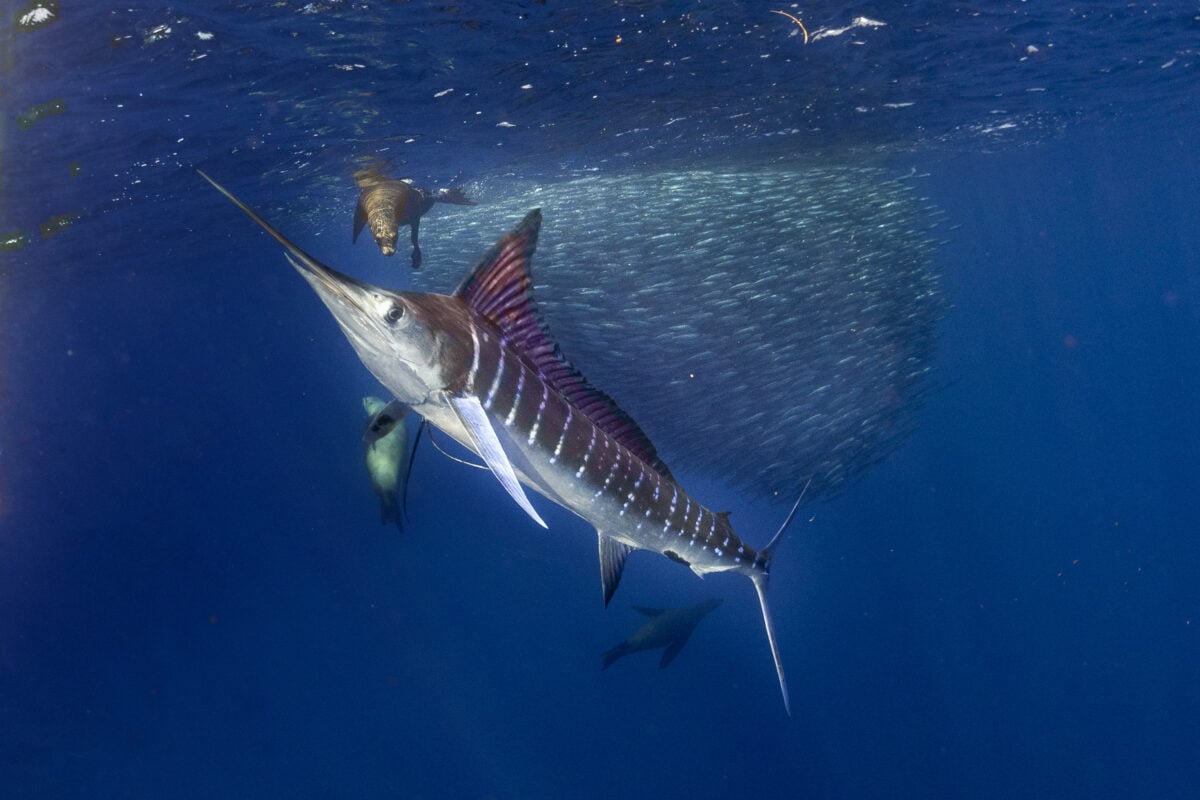It was 1970, off the coast of Oahu, Hawaii, when Captain Cornelius Choy caught the largest blue marlin ever recorded – a record that hasn’t been surpassed in over fifty-four years.
The weight? A mammoth 1,805 pounds. Imagine the fight; it must have gone on for hours. I mean, a 15-inch largemouth bass is enough to get the muscles burning.
Mighty and quick, few aquatic animals possess as much power as marlin. Even while weighing the same as most sharks, they can reach lightning-fast speeds.
Giants of the Sea
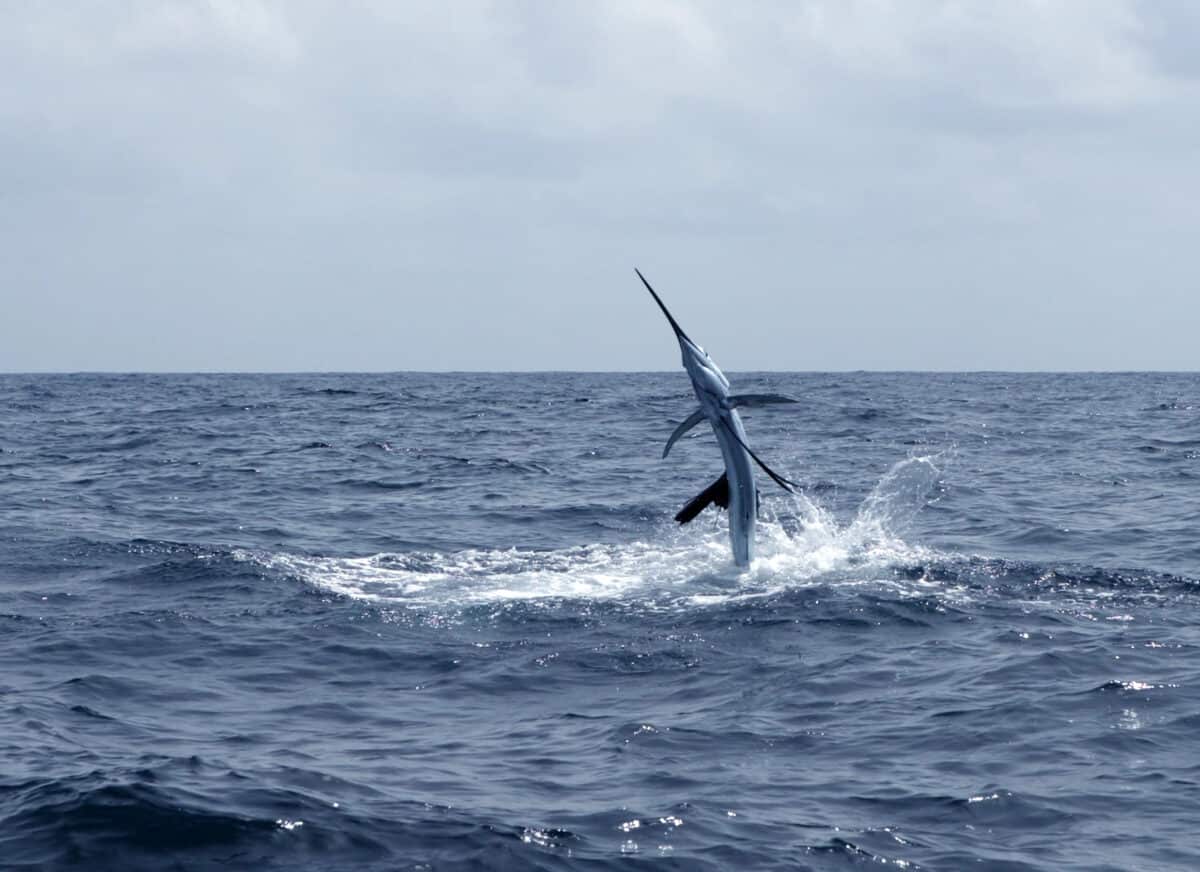
The biggest species of marlin is the Atlantic blue marlin, which can grow up to 14 feet in length and weigh over 2,000 pounds. It is one of the largest fish species on the planet.
But there are also striped and black marlin, which are known to extend upwards of 10 feet in length and weigh several hundred pounds.
Roaming the High Seas
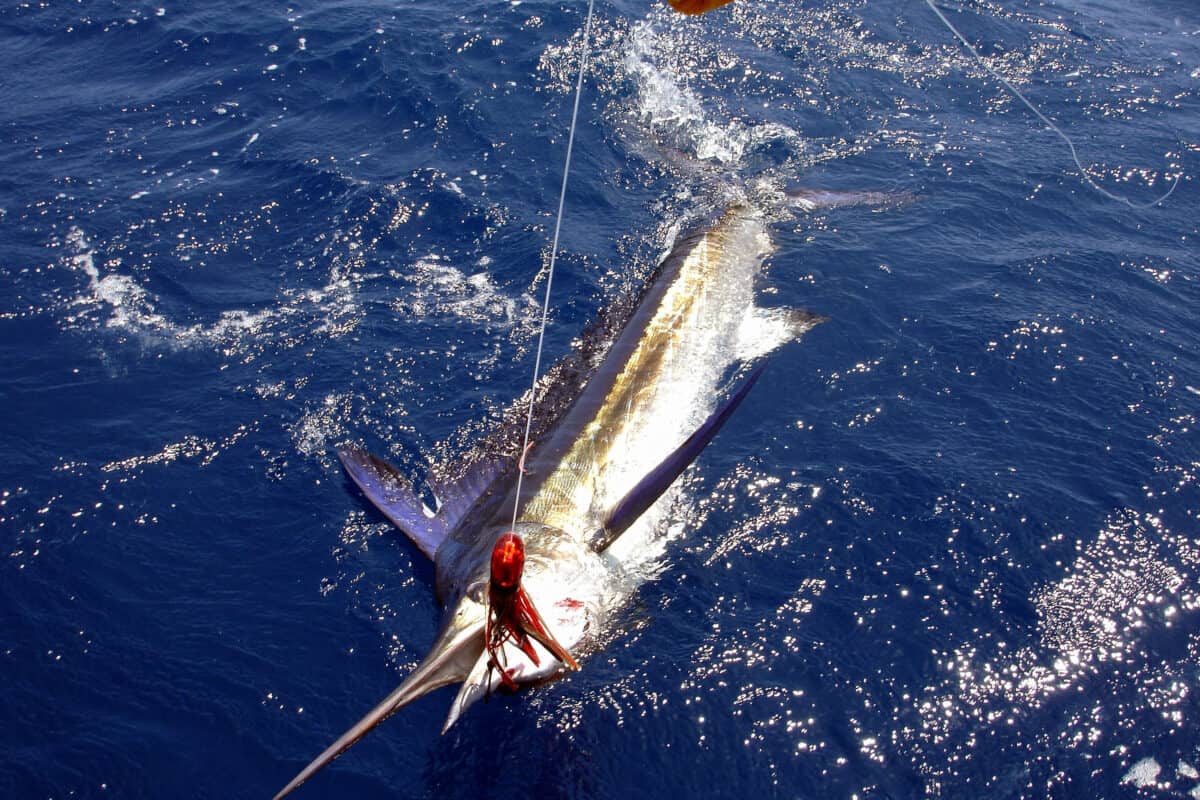
Renowned travelers, Marlin is synonymous with traveling extraordinary distances, traversing every climate imaginable, from the Atlantic to the Indian Ocean, in search of prey and suitable breeding grounds.
In the Pacific, they’re often spotted along the coasts of California, Mexico, Hawaii, and Australia, while in the Atlantic, they roam from the Gulf of Mexico to the waters off West Africa, near the borders of Ghana and Senegal.
They have long been the golden fish for many anglers, a true bucket list fish.
Apex Predators of the Deep
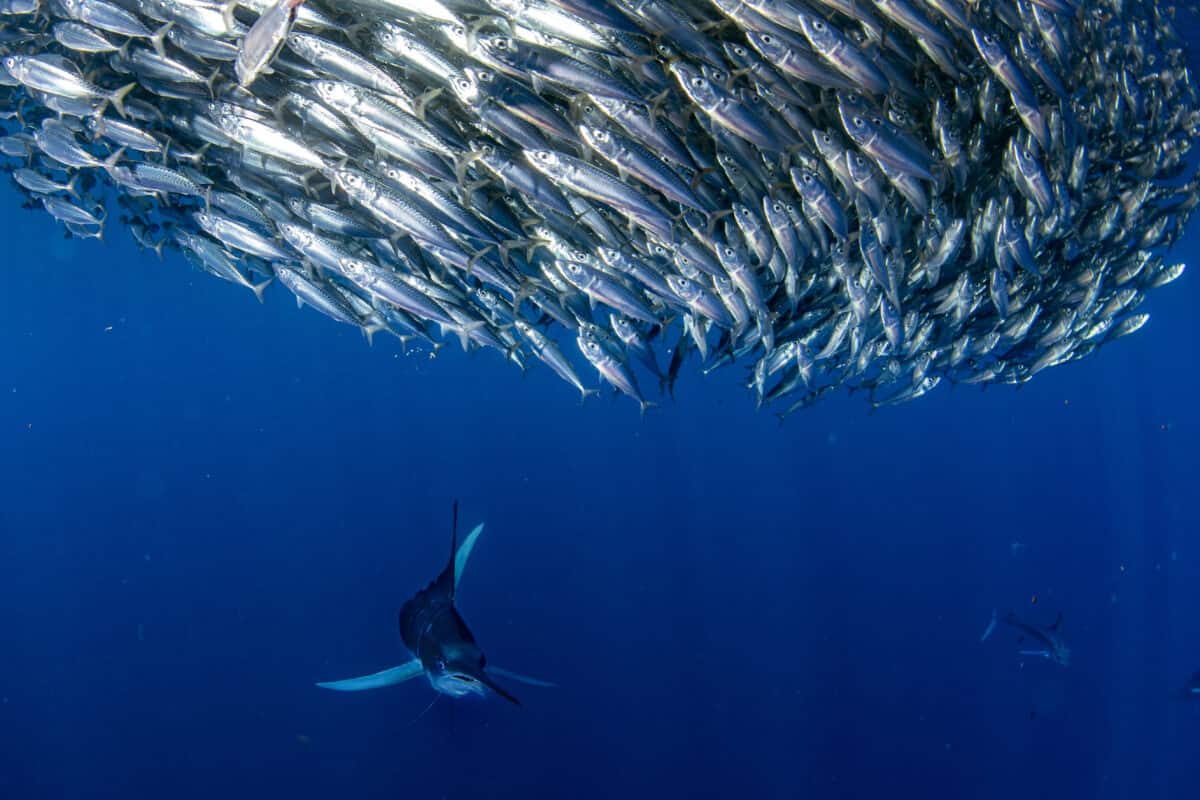
Similarly to other apex predators like lions, marlins are pivotal to maintaining the health and balance of marine ecosystems. Deadly hunters who rarely miss, they prey on many smaller fish, squid, and other aquatic organisms.
Their sleek bodies and powerful tails allow them to reach up to 50 miles per hour. This incredible agility and speed make them one of the deadliest hunters in the ocean, often alerting prey by the time it’s too late, like an eagle soaring down from the sky.
Characteristics and Behavior
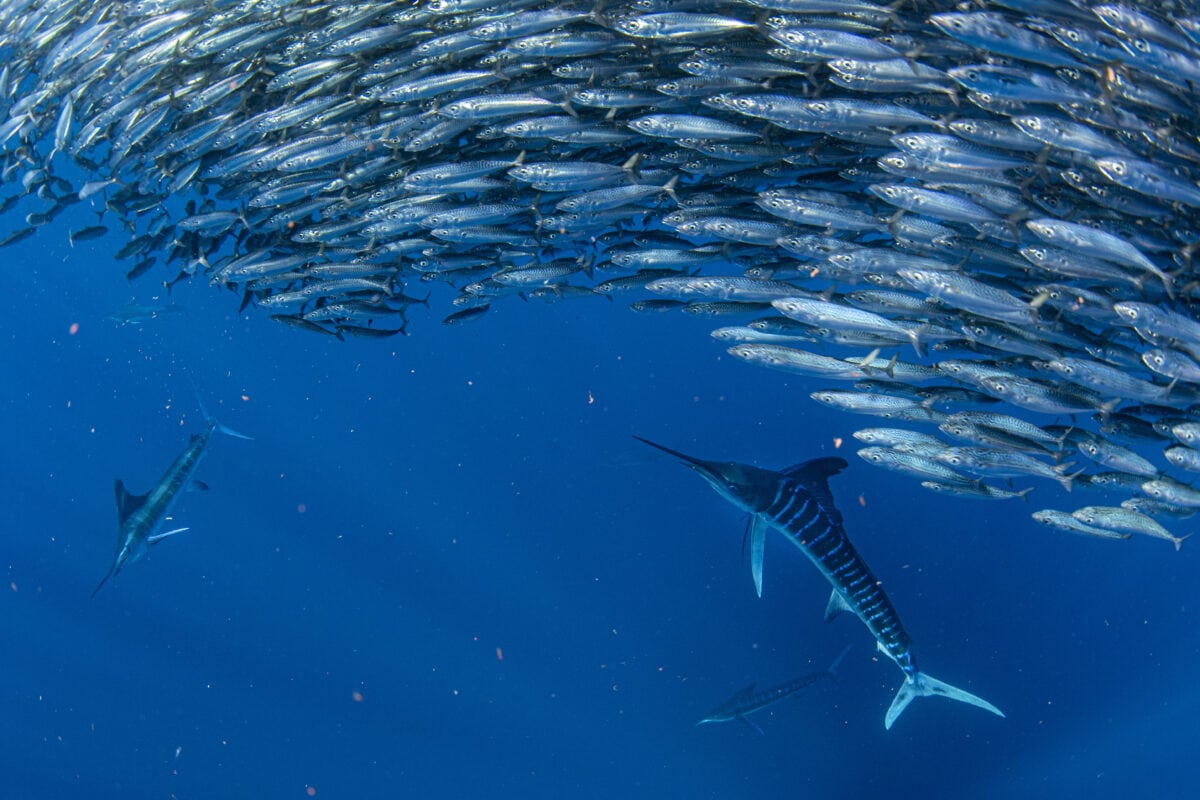
The best way to identify a marlin is by its elongated, spear-like bill, which they use to slash and stun its prey. The equivalent to a knockout punch. This unique adaptation allows them to incapacitate their prey before consuming it, minimizing the risk of injury from sharp spines or fins.
Another tell is their striking coloration, which can vary depending on species and age. Adult blue marlin, for example, are characterized by their iridescent blue dorsal surfaces and silvery-white underbellies. In contrast, black marlins often exhibit dark blue or black streaks and white stripes along their sides.
From an angler’s perspective, the desire to catch them is because of their tenacity and brute strength. Many believe it to be the most rewarding catch. Why? Once hooked, they often engage in long, powerful runs, testing the angler’s skill and endurance to the limit. Their acrobatic leaps and tail-walking antics are legendary among sport fishermen, making the marlin one of the most sought-after game fish in the world.
If you wish to carry reading, you may enjoy these:
- Watch a Fisherman Reels In a Gigantic 240kg Bull Shark From Gold Coast Lake
- Man Gets Great White On the Hook When Fishing For Bass in Bay of Fundy
- A Tale of Whale Migration in Both Hemispheres
Join our Forum for free today!

- Second American Killed by Elephant in Zambia This Year - July 22, 2024
- Elderly Man Kills Grizzly Bear in Montana - July 22, 2024
- Missing Cat Found Weeks Later, 40 Miles Away - July 21, 2024

